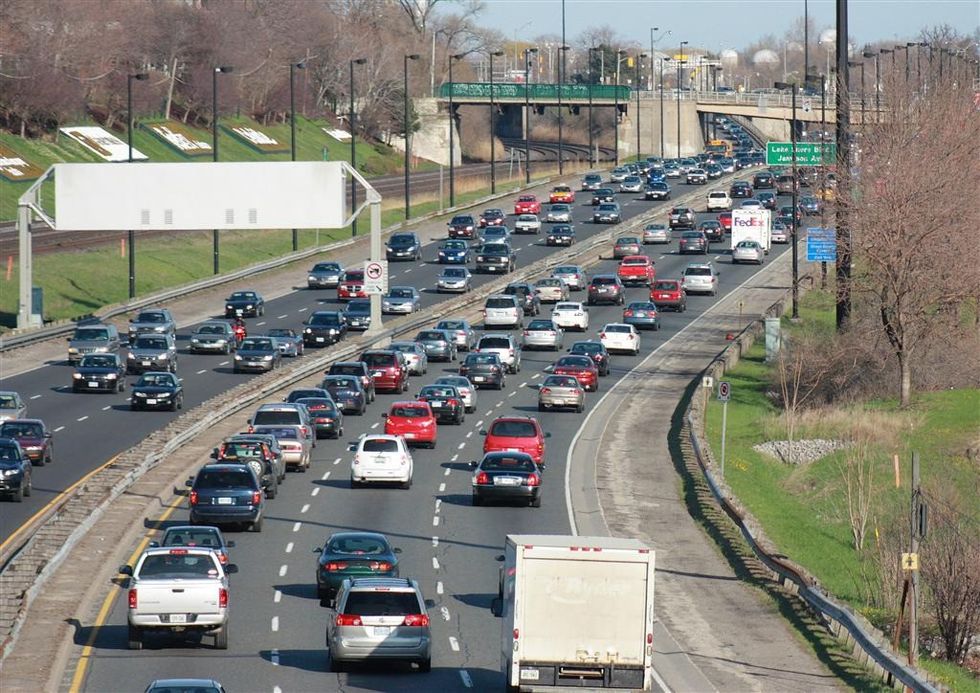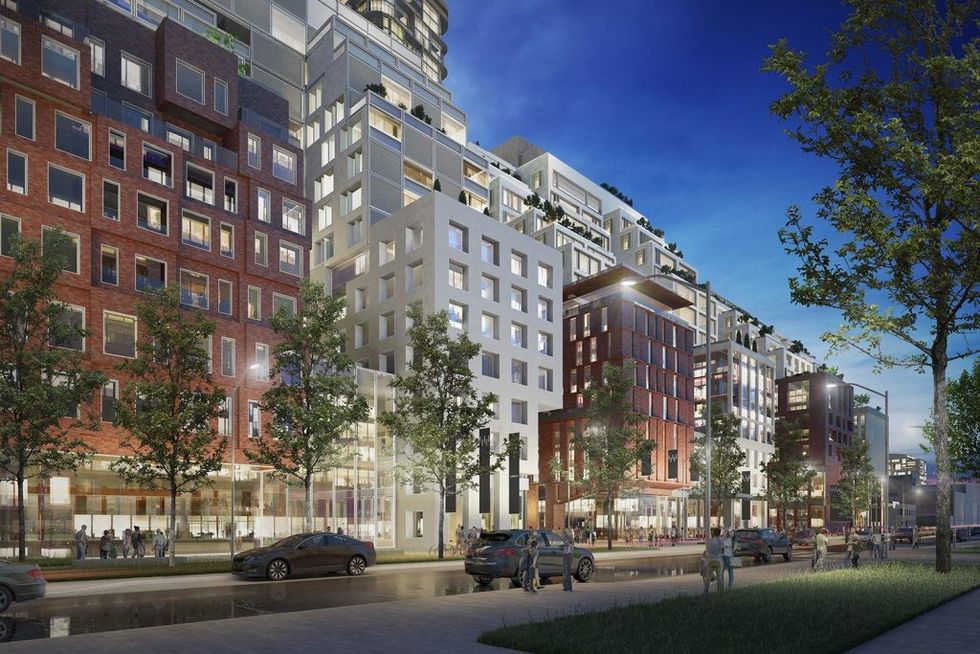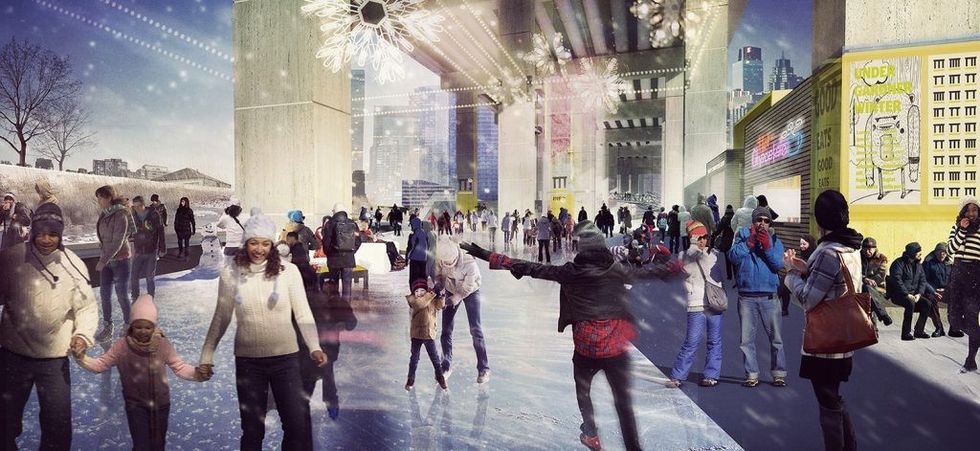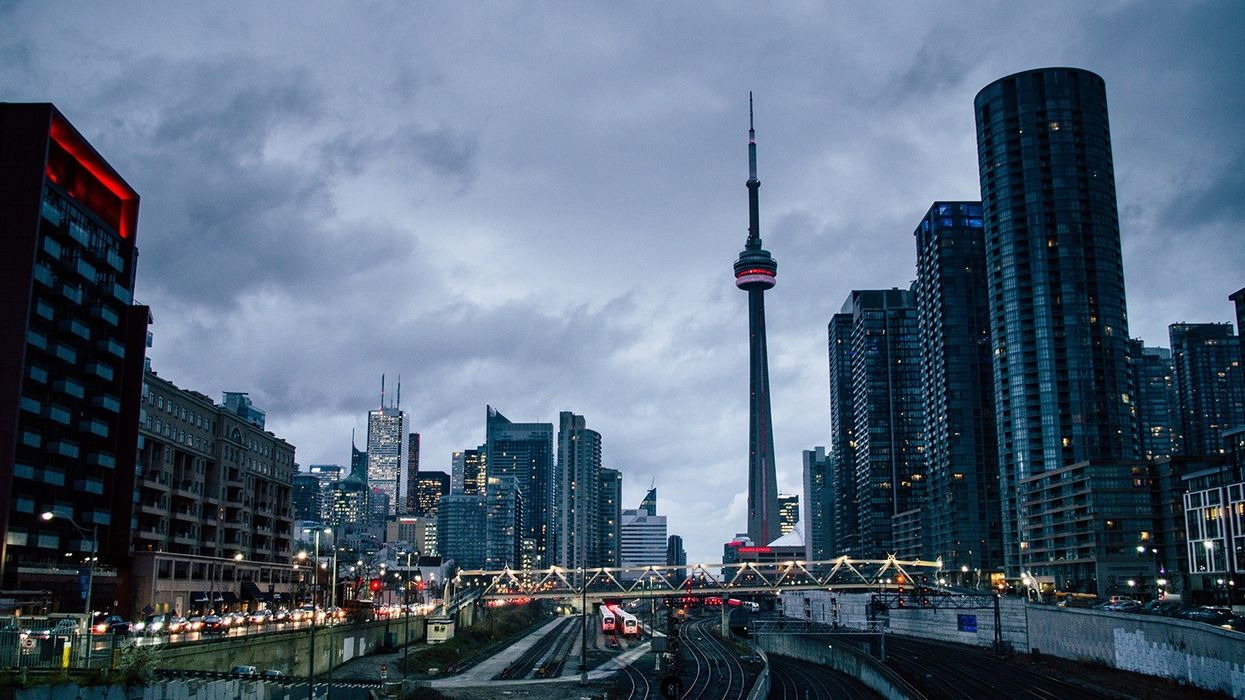
If it's true all's well that ends well, 2016, as awful as it has been for Toronto, will end better than it started. Thanks to Mayor John Tory's recent conversion to the idea of tolling the Don Valley Parkway and the Gardiner Expressway, the year will go out on a high note. At the same time, the city took another small step into the 21st century.
Until then, however, Toronto was well on the way to setting some sort of record for civic folly. Tory's leadership had been a litany of failure. Under him, the city's refusal to deal with economic reality remained unchecked. Under him, the transit file went from bad to worse; TTC fares increased, service declined. The madness of the one-stop Scarborough subway continued unabated. Even the Presto card payment system has become a fiasco. Little wonder ridership and revenues are down dramatically.
On the other hand, development stayed strong but so out of control that downtown councillor Kristyn Wong-Tam called for a year-long moratorium on growth. Speaking of growth, chief planner Jennifer Keesmaat, despite her platitudes, did nothing to make planning relevant. Stumbling along with little sense of a larger vision, her department is adrift in an ocean of meaningless detail. In the meantime, Toronto is awash in a flood of nearly identical condo towers.

Regardless, news that His Worship has seen the light on road pricing marks a sea change for Canada, let alone Toronto, a city where driver convenience is the measure of virtually all civic policy. Indeed, even Tory’s proposed tolls would be used to pay for his ruinous decision to rebuild the east end of Gardiner bigger and better than ever.
Of course, every politician and pundit this side of the 48th parallel felt the need to weigh in on the scheme. Most were opposed, including some normally sensible councillors such as Shelley Carroll. Like many, she worried that road tolls, which she fears will distract us from the real issues, won’t be a “magic elixir” and will hurt the poor more than the rich. Since when has that been a justification for inaction? Still, no one disagrees the city desperately needs the money, estimated at between $200 and $500 million annually depending on the amount of the levies.
Most interesting, though, was a poll that found public opinion divided, 46 per cent in favour of tolls, 45 per cent opposed. And as pollster Lorne Bozinoff noted, “For a perennially unpopular idea like road tolls to receive approval from almost half the voters, and to be tied with those who disapprove, is unheard of.”
Welcome to the new Toronto, a city whose residents are decades ahead of its elected leaders, many of them relics who left their brains back in the 1970s. By contrast, Torontonians, increasingly young, educated and urban, have different priorities. Useable transit matters more to them than expanding the Gardiner. For them, mobility is the issue, not simply traffic.
Residents are bringing a more nuanced and sophisticated understanding to the discussion of city life. For example, where planners and politicians focus almost exclusively on how tall towers should be, the real issue is how these towers behave at street level. Do they demonstrate good urban manners? Do they give as much to the city as they take? Do they respond to their urban context or turn their back on it?

This is a message some builders have taken to heart, but which others continue to ignore. For every project like The Well, a remarkable mixed-use complex transforming Front and Spadina, there are any number of anonymous glass towers that could be anywhere. They are the inevitable results of a development process that leads to similar outcomes regardless of circumstances.
Looming over that process is the Ontario Municipal Board, the quasi-judicial tribunal that has final say over development. It is the de facto planning authority in Toronto and every other city in the province. That’s why Queen's Park’s decision to revisit the OMB ranks among the most potentially significant events of 2016. Depending on what transpires, Toronto might finally get the power to control its own destiny.
But as they say, be careful what you wish for. Getting rid of the board would leave Toronto with no one to blame but itself. The OMB has left city planners and politicians in an infantilized state, not just unwilling to make tough decisions, but unable. Instead of insisting on excellence and wrestling with NIMBY intransigence, councillors would rather smile and let the OMB do their dirty work. By the way, let's not forget that the City of Toronto Act allows the city to take some powers from the board, powers it has never sought.

Still, there are reasons for optimism: The Bentway, despite its off-putting name, is an innovative project that will help lead Toronto into the future. Stretching beneath the Gardiner from Strachan to Spadina, the multi-use extension of the public realm will bring life to a long ignored part of the city and help connect downtown to the waterfront. More remarkable, however, The Bentway is happening because of a $25-million donation from Judy and Wil Matthews. Their unprecedented gift broke new ground, physically and culturally.
That spirit continued in October when a group of philanthropists raised $3.4 million for the proposed Don Valley Park, which would extend from Evergreen Brick Works to the mouth of the Don.
Then there was Rail Deck Park, a visionary 21-acre green space that would sit above the railroad tracks east of Spadina. The scheme was announced in September to much acclaim. Reaching deep for an appropriate cliche, Keesmaat declared this would be Toronto's “Central Park.”
Cultural colonialism is common in Canada, but more to the point, the city has no way to pay for such a facility. And given that it would cost more than $1 billion, there simply isn't enough philanthropy to go around. Most likely, it will end up on Toronto's list of unfunded capital projects. That now stands at $33 billion, an indication of the city's abject failure to put its money where its mouth is and another reason people find it hard to take Toronto seriously.





















